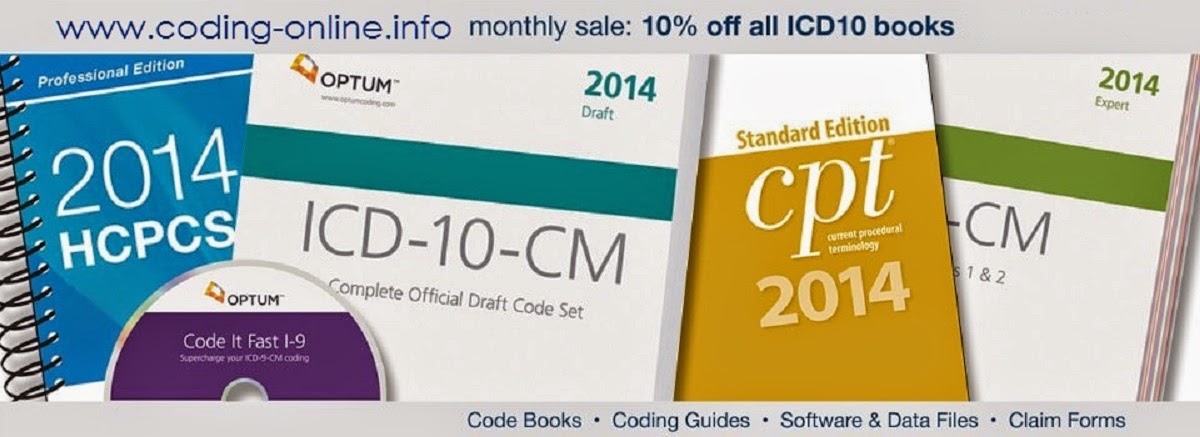Medical coding, insurance billing and reimbursement is how a physician gets paid. Correct coding will lead to fewer denials by the insurance carrier. Gain the knowledge that you need by taking this class. Be one step ahead of the game.
The healthcare industry, complex and rigorous even for the most knowledgeable and thorough of professionals, requires that paperwork be submitted both in a highly accurate and very timely manner.
The area of healthcare involving the completion of paperwork outlining patients' billing histories and submission of them to the individual's insurance company for reimbursement is known as 'medical billing'. Within medical billing there exists the practice of 'medical coding' whereby codes are assigned to medical procedures and diagnoses in order to relay--in a universally accepted medical language--information to the insurance company or in some cases, governmental agencies and/or consulting firms.
Also known as 'insurance coding', medical billing/coding is viewed to be essential to the healthcare industry for it creates and maintains a single, unified language by which all (physicians, medical administrators, insurance companies, government healthcare officials) integrated parties are able to effectively communicate.
In this course, we're going to learn medical coding from the ground up. Whether you are new to medical coding, or already have experience, this course is written in 'laymen's terms' yet is comprehensive enough to help even seasoned medical coders.
Learning Outcomes
By successfully completing this course, students will be able to:
· Define medical coding.
· Summarize diagnosis coding.
· Define ICD-9-CM and summarize its coding and structure.
· Describe the reimbursement process.
· Demonstrate solving ICD-9-CM coding practice problems.
· Define Current Procedural Terminology (CPT) and summarize its coding and structure.
· Demonstrate Evaluation and Management (E/M) Coding.
· Demonstrate Surgery and Integumentary System Coding.
· Demonstrate using Anesthesia CPT Codes.
· Demonstrate coding for Cardiovascular, Respiratory, Musculoskeletal Systems.
· Demonstrate Radiology and Pathology Coding.
· Solve CPT Coding Practice Problems.
· Summarize documentation procedures.
· Summarize issues with fraud and abuse, and
· Demonstrate mastery of lesson content at levels of 70% or higher.
Course Lessons
Lesson 1: Introduction to Medical Coding The healthcare industry, complex and rigorous even for the most knowledgeable and thorough of professionals, requires that paperwork be submitted both in a highly accurate and very timely manner. |
Lesson 2: Introduction to Diagnosis Coding "Act or process of identifying of determining the nature and cause of a disease or injury through the evaluation and examination of a patient history's and the review of subsequent laboratory data." |
Lesson 3: ICD-9-CM - What is it? Introduction to ICD-9-CM coding. |
Lesson 4: ICD-9-CM Coding and Structure Formally known as the International Classification of Diseases, Ninth Revision, Clinical Modification, most within the healthcare industry tend to call it by its acronym, ICD-9-CM. |
Lesson 5: Reimbursement One of the primary purposes of medical coding, and subsequent billing, is to obtain a reimbursement from the third-party biller. |
Lesson 6: ICD-9-CM Coding Practice Problems Review ICD-9-CM Coding Practice Problems. |
Lesson 7: Current Procedural Terminology (CPT) What is CPT? |
Lesson 8: CPT Coding and Structure Current Procedural Terminology (CPT) as officially stated encompasses a set of codes, descriptions and guidelines used to distinguish medical procedures performed by physicians and additional healthcare providers. |
Lesson 9: Evaluation and Management (E/M) Coding In this lesson we'll be exploring E/M coding. |
Lesson 10: Surgery and Integumentary System Coding In this lesson we'll explore surgery and integumentary system coding. |
Lesson 11: Anesthesia CPT Codes Let's explore the anesthesia CPT codes. |
Lesson 12: Cardiovascular, Respiratory, Musculoskeletal Systems Cardiovascular, respiratory and musculoskeletal are distinct in terms of their unique terminologies and special cases, they all share the commonality of having a range of codes correlative to anatomical surgeries. |
Lesson 13: Radiology and Pathology Coding We will now turn our attention to the two remaining CPT Manual subsections (outside of medicine and the appendices), those of radiology and pathology. |
Lesson 14: CPT Coding Practice Problems Within the CPT 2007 Standard edition, there are literally tens of thousands of individual CPT codes. Thus, while it would impossible and non-productive (as they change so frequently) to memorize all of the codes, it is a good idea to understand how the ma |
Lesson 15: Introduction to Documentation (Medical History) Health Information Management and Documentation occupies a titanic area within the medical world. |
Lesson 16: Medical Examination, Decision Making, Selecting the Correct Code As a medical coder, your job will be select the most appropriate diagnostic and/or procedural code in order to report encounters, services, tests, treatments, supplies and procedures provided to a patient. |
Lesson 17: Issues with Fraud and Abuse Within the US, hundreds upon hundreds of cases pertaining to medical coding/billing fraud and abuse annually amount to billions of dollars lost to government programs, public and private healthcare companies and third party billers. |
Glossary Course Glossary |
Learn medical coding from the ground up. Whether you are new to medical coding, or already have experience, this course is written in 'laymen's terms' yet is comprehensive enough to help even seasoned medical coders.
Also known as 'insurance coding', medical billing/coding is viewed to be essential to the healthcare industry for it creates and maintains a single, unified language by which all (physicians, medical administrators, insurance companies, government healthcare officials) integrated parties are able to effectively communicate.
This course will provide the type of information you will need to be successful as a professional medical coder:
- Basic medical terminology
- Basic claims process for medical insurance reimbursement
- Methodologies for completing common insurance forms
- Guidance for using medical billing software
- Introduction to diagnostic and procedural coding systems

